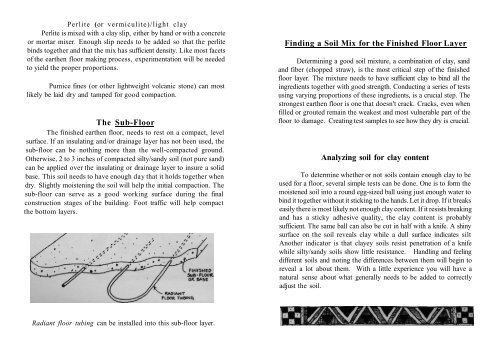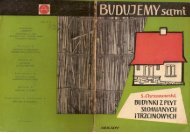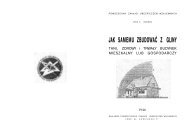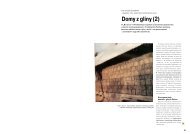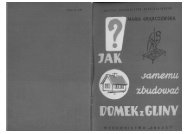by Athena and Bill Steen - Cohabitat
by Athena and Bill Steen - Cohabitat
by Athena and Bill Steen - Cohabitat
Create successful ePaper yourself
Turn your PDF publications into a flip-book with our unique Google optimized e-Paper software.
Perlite (or vermiculite)/light clay<br />
Perlite is mixed with a clay slip, either <strong>by</strong> h<strong>and</strong> or with a concrete<br />
or mortar mixer. Enough slip needs to be added so that the perlite<br />
binds together <strong>and</strong> that the mix has sufficient density. Like most facets<br />
of the earthen floor making process, experimentation will be needed<br />
to yield the proper proportions.<br />
Pumice fines (or other lightweight volcanic stone) can most<br />
likely be laid dry <strong>and</strong> tamped for good compaction.<br />
The Sub-Floor<br />
The finished earthen floor, needs to rest on a compact, level<br />
surface. If an insulating <strong>and</strong>/or drainage layer has not been used, the<br />
sub-floor can be nothing more than the well-compacted ground.<br />
Otherwise, 2 to 3 inches of compacted silty/s<strong>and</strong>y soil (not pure s<strong>and</strong>)<br />
can be applied over the insulating or drainage layer to insure a solid<br />
base. This soil needs to have enough day that it holds together when<br />
dry. Slightly moistening the soil will help the initial compaction. The<br />
sub-floor can serve as a good working surface during the final<br />
construction stages of the building. Foot traffic will help compact<br />
the bottom layers.<br />
Radiant floor tubing can be installed into this sub-floor layer.<br />
Finding a Soil Mix for the Finished Floor Layer<br />
Determining a good soil mixture, a combination of clay, s<strong>and</strong><br />
<strong>and</strong> fiber (chopped straw), is the most critical step of the finished<br />
floor layer. The mixture needs to have sufficient clay to bind all the<br />
ingredients together with good strength. Conducting a series of tests<br />
using varying proportions of these ingredients, is a crucial step. The<br />
strongest earthen floor is one that doesn't crack. Cracks, even when<br />
filled or grouted remain the weakest <strong>and</strong> most vulnerable part of the<br />
floor to damage. Creating test samples to see how they dry is crucial.<br />
Analyzing soil for clay content<br />
To determine whether or not soils contain enough clay to be<br />
used for a floor, several simple tests can be done. One is to form the<br />
moistened soil into a round egg-sized ball using just enough water to<br />
bind it together without it sticking to the h<strong>and</strong>s. Let it drop. If it breaks<br />
easily there is most likely not enough clay content. If it resists breaking<br />
<strong>and</strong> has a sticky adhesive quality, the clay content is probably<br />
sufficient. The same ball can also be cut in half with a knife. A shiny<br />
surface on the soil reveals clay while a dull surface indicates silt<br />
Another indicator is that clayey soils resist penetration of a knife<br />
while silty/s<strong>and</strong>y soils show little resistance. H<strong>and</strong>ling <strong>and</strong> feeling<br />
different soils <strong>and</strong> noting the differences between them will begin to<br />
reveal a lot about them. With a little experience you will have a<br />
natural sense about what generally needs to be added to correctly<br />
adjust the soil.


